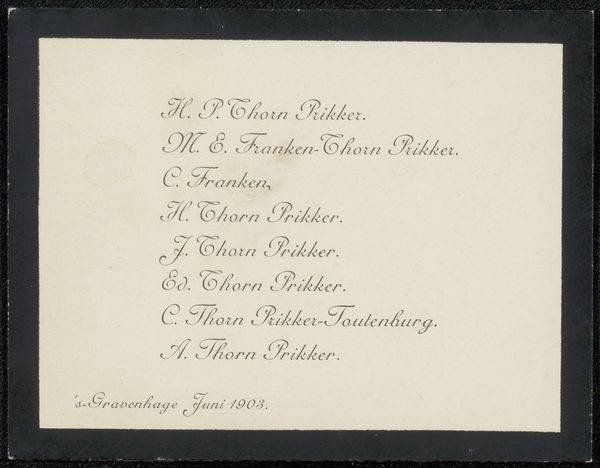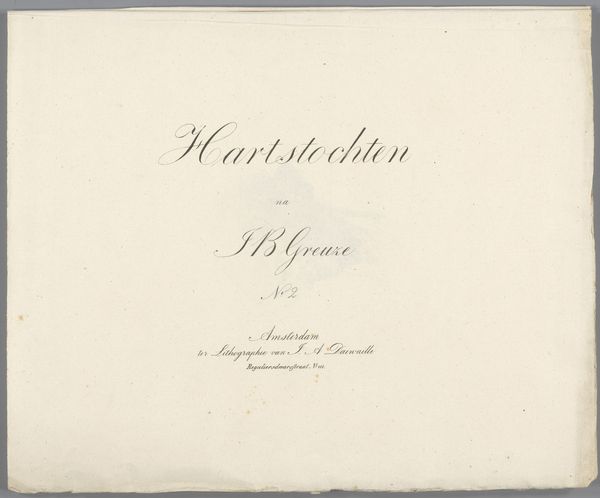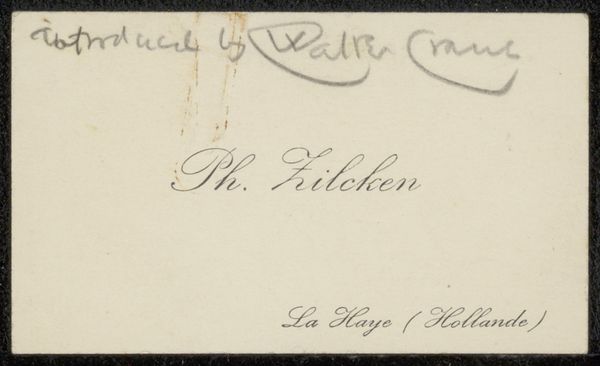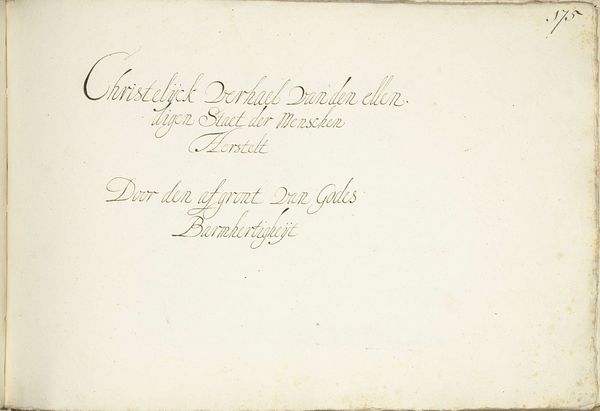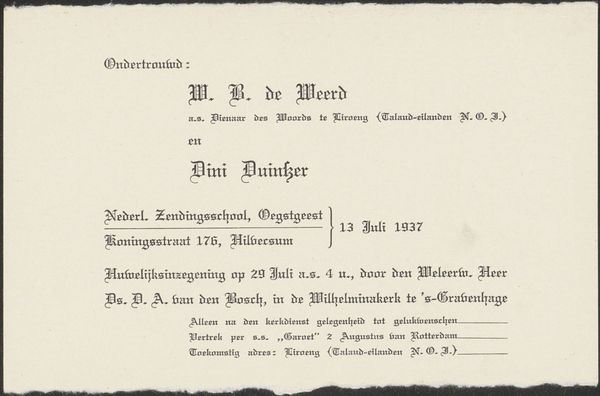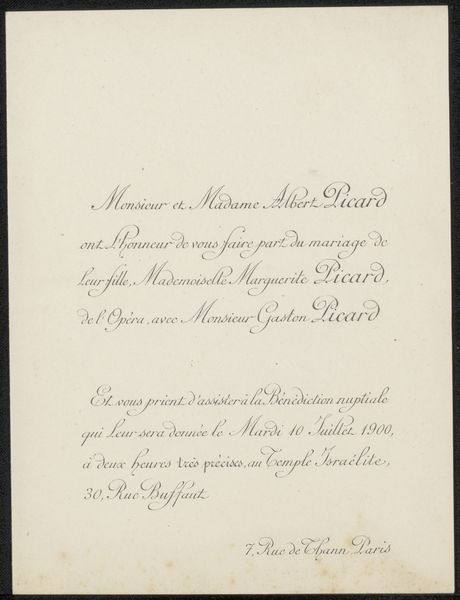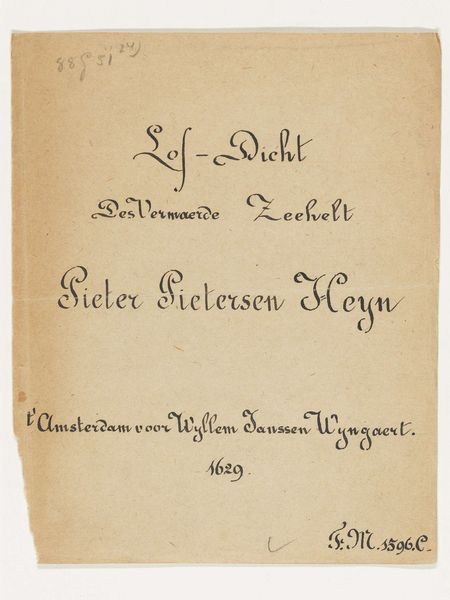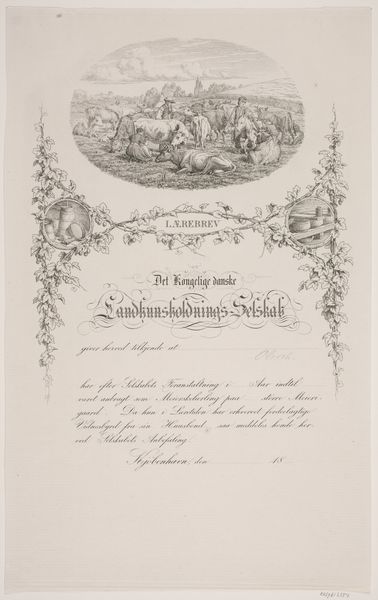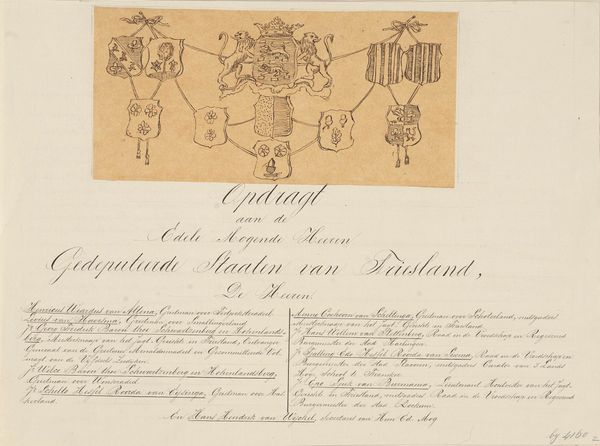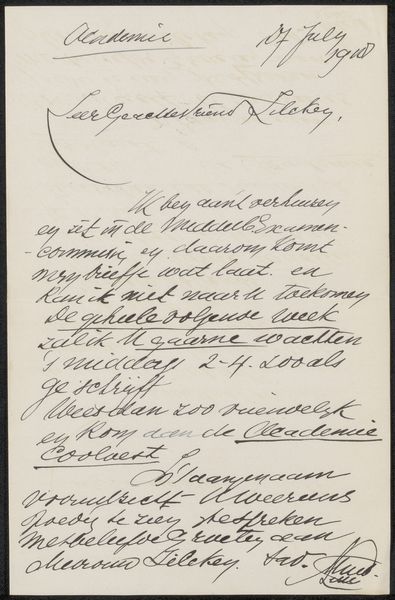
graphic-art, typography, poster
#
script typeface
#
graphic-art
#
script typography
#
arts-&-crafts-movement
#
old engraving style
#
hand drawn type
#
feminine typography
#
typography
#
hand-drawn typeface
#
thick font
#
pen work
#
handwritten font
#
golden font
#
poster
#
calligraphy
Copyright: Rijks Museum: Open Domain
Curator: I find something undeniably poignant about this piece, an "Ondertrouwaankondiging aan Philip Zilcken," believed to be from 1890 to 1897, housed here at the Rijksmuseum. There’s such a restrained elegance to it. What is your first impression? Editor: I see a delicate balance between announcement and invitation, a formal script that hints at a deeply personal event. It speaks of societal expectations and private emotions intertwining. Curator: Absolutely. These pre-printed announcements, typically announcing marriage banns, reveal so much about the social fabric of the time. Note the artist – sadly anonymous – has designed this almost like a piece of fine art, reflecting the ideals of the Arts and Crafts movement. Editor: Considering the anonymous signature and given it announces a forthcoming marriage, I see this artwork as pointing to how even our most intimate experiences become tied to economic, gender, and class structures. Notice how Anton is labeled “Kunstschilder,” yet Anna's identity is limited to her last name. Curator: A potent observation. The explicit detailing of Anton Koster's profession establishes his social standing and economic capacity in a way that excludes Anna Unterhorst, underscoring disparities reinforced by patriarchal institutions. Further consider the date itself, the close of the 19th century; it's a time when societal expectations and artistic experimentation were undergoing considerable shifts. Editor: The stark announcement of "Geen receptie" - "No reception" – also raises questions. What implications did this absence of a public celebration carry for the couple's standing or for societal approval? Curator: Fascinating questions to pose to visitors. It provokes inquiry into the couple’s relationship to broader community and social expectations. In looking at the graphic elements and reflecting upon them, this image transcends a mere historical artifact, becoming a portal into understanding complex social dynamics. Editor: Yes, moving beyond its visual qualities, the image asks: How does artistic production legitimize gendered or socioeconomic positions and how can we disrupt or reimagine these inherited norms through artistic exploration? I am very curious about who received this. Curator: It is something to ponder; in essence, this small print reflects substantial cultural narratives.
Comments
No comments
Be the first to comment and join the conversation on the ultimate creative platform.
